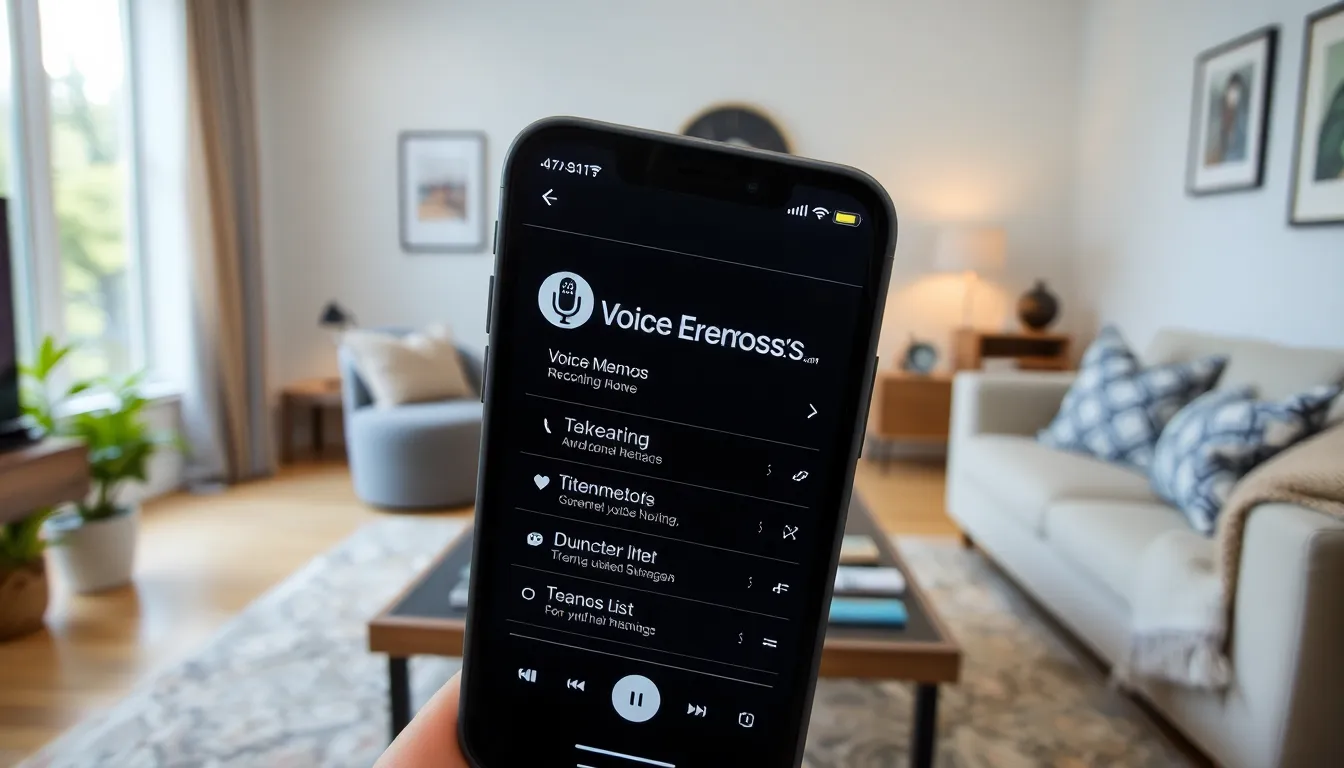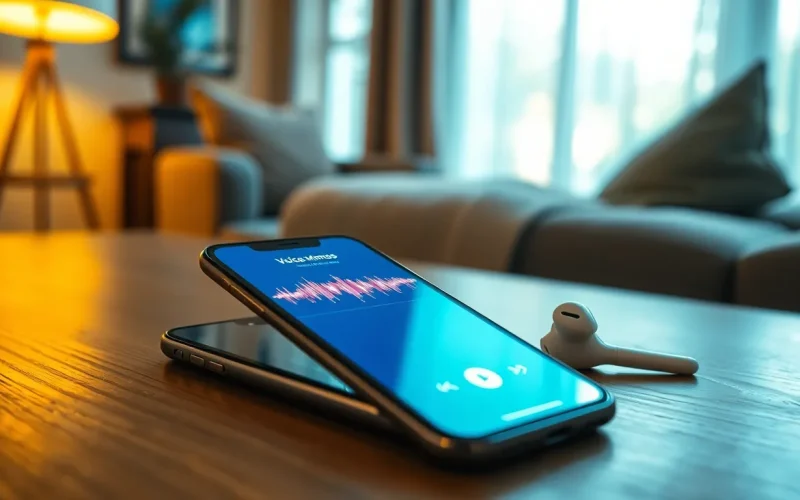Table of Contents
ToggleIf you’ve ever found yourself wondering where your brilliant ideas and impromptu karaoke sessions go after hitting that record button on your iPhone, you’re not alone. Voice recordings can feel like digital whispers that vanish into thin air, but fear not! They’re nestled safely in your device, waiting for you to rediscover them.
Understanding Voice Recordings on iPhone
Voice recordings on an iPhone typically reside in the Voice Memos app. This app provides an intuitive interface for users to record audio easily. Users may find their recordings listed chronologically, making retrieval straightforward. Each recording shows a title, duration, and date created for quick reference.
Additionally, iPhone settings allow users to manage their recordings effectively. They can share recordings via email or messaging apps, enhancing accessibility. If a user chooses to delete a recording, it moves to the “Recently Deleted” folder. This folder retains recordings for 30 days, providing an opportunity for recovery.
For those who prefer cloud storage, iCloud offers a seamless solution. Users can store voice recordings in iCloud Drive, enabling access across devices. Voice recordings synced with iCloud ensure that they’re backed up and retrievable from any device linked to the user’s account.
Security remains a priority. Voice recordings are stored on the device and are encrypted, ensuring privacy. Users can rest assured that their audio data is protected against unauthorized access.
Lastly, understanding how to navigate these features enhances the user experience. Familiarity with the Voice Memos app and iCloud capabilities allows for effective organization and retrieval of recordings. Engaging with these functionalities transforms the experience from frustration to efficiency.
Locations of Voice Recordings

Voice recordings on an iPhone typically find their home in two primary locations: iCloud and local storage. Users can easily access and manage their recordings based on their preferences.
iCloud Storage
iCloud offers a convenient way to store voice recordings securely. Recordings synced with iCloud are accessible from any device linked to the same Apple ID. It simplifies backup processes and ensures recordings are not lost even if the device gets replaced. Users benefit from having a consistent experience across devices, eliminating issues with transferring files. To enable this feature, users must turn on iCloud Drive in Settings, allowing automatic synchronization.
Local Storage
Local storage remains another option for voice recordings, primarily residing within the Voice Memos app. Each recording saves directly to the device, allowing instant access without internet connectivity. Users can manage their recordings easily, organizing them into folders or deleting those no longer needed. In addition, deleted recordings can surface in the “Recently Deleted” folder for up to 30 days, enabling recovery if needed. This system provides flexibility and control over personal recordings without relying on cloud storage.
Accessing Your Voice Recordings
Finding voice recordings on an iPhone is straightforward. Users primarily rely on the Voice Memos app or can navigate through the Files app for access.
Using the Voice Memos App
The Voice Memos app serves as the main storage location for recordings. Upon opening the app, recordings appear in a list format, showcasing dates and durations. Users can tap on any recording to play it back or edit it. Options for sharing recordings include sending via email or messaging apps. Organizing recordings into folders enhances manageability for users. Each recording can be easily deleted, and deleted items remain in the “Recently Deleted” folder for 30 days.
Through the Files App
To access recordings via the Files app, users can go directly to the app. In the app, tapping “Browse” reveals various locations, including iCloud Drive and local device storage. Voice memos stored in iCloud can be found under the “iCloud Drive” section if enabled in Settings. Those saved locally will appear in the “On My iPhone” section. Users can easily search for specific recordings, ensuring quick retrieval.
Managing Your Voice Recordings
Managing voice recordings on an iPhone is straightforward, offering options for deletion and sharing that enhance user control.
Deleting Recordings
Deleting recordings happens easily within the Voice Memos app. Users simply swipe left on the recording they wish to remove and tap “Delete.” It’s important to note that deleted recordings remain temporarily in the “Recently Deleted” folder, allowing recovery within 30 days. If recovery is needed, users can access this folder, select the relevant recording, and choose “Recover.” Permanent deletion happens once recordings exceed this retention period, ensuring a safety net for users who may change their minds about a recording.
Sharing Recordings
Sharing recordings presents multiple options for users. The Voice Memos app includes a “Share” button that allows sharing via messages or email. Selecting a recording brings up this option, permitting users to choose their preferred sharing method quickly. Recipients can receive files as audio attachments or links, depending on the chosen method. Additionally, sharing through AirDrop enables rapid transfers to nearby Apple devices, facilitating quick collaboration. These features ensure that users can easily distribute their recordings without hassle, maintaining seamless communication.
Voice recordings on an iPhone are easily accessible and securely stored within the Voice Memos app. Users can confidently manage their recordings knowing they can retrieve deleted files from the “Recently Deleted” folder. Whether saved locally or in iCloud, these recordings remain within reach, ensuring that important moments and ideas aren’t lost. With simple sharing options and organizational tools, users can enhance their experience and maintain control over their audio files. Understanding these features empowers users to make the most of their voice recordings and streamline their digital lives.





